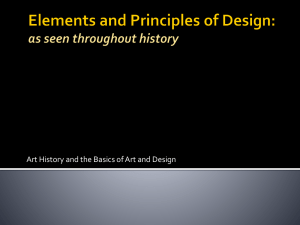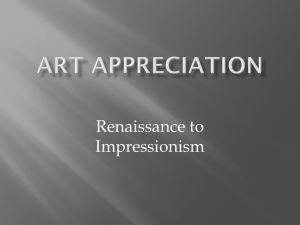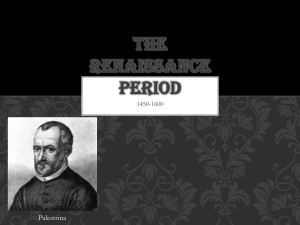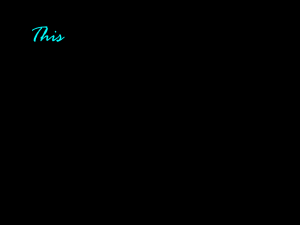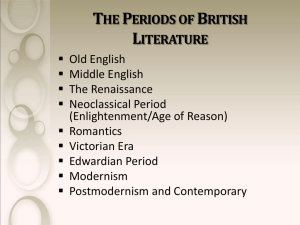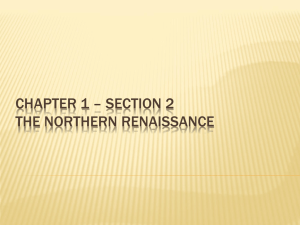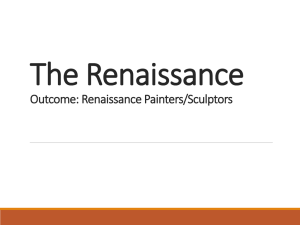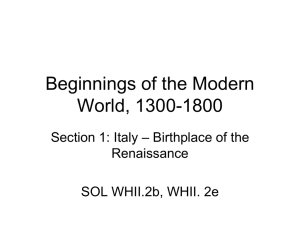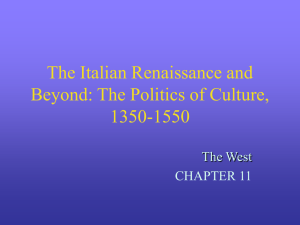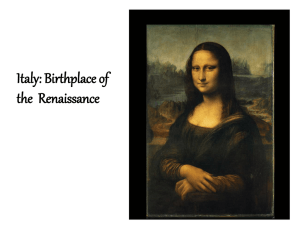THE RENAISSANCE 1500-1660
advertisement
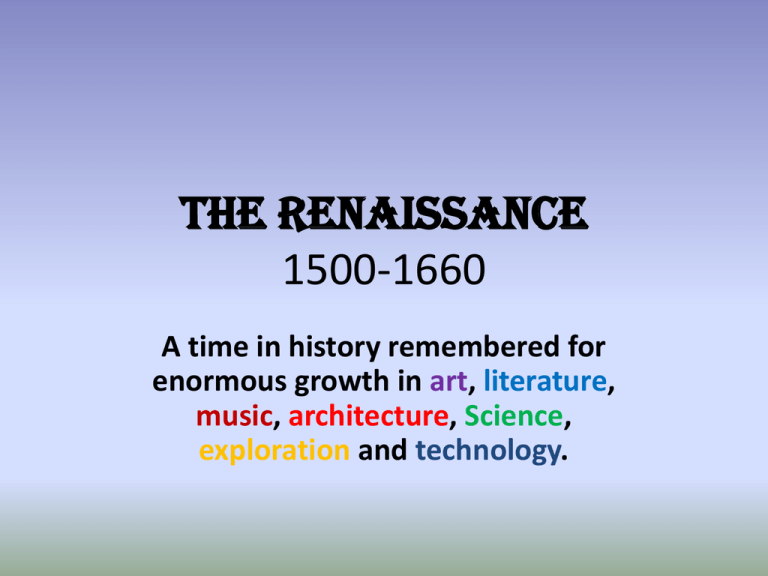
THE RENAISSANCE 1500-1660 A time in history remembered for enormous growth in art, literature, music, architecture, Science, exploration and technology. • The Renaissance was a time of renewal • Renaissance means rebirth, and Europe was recovering from the Dark ages and the plague. • People had lost their faith in the church and began to put more focus on human beings. Where did it take place? •Begun in Italy • Spread throughout Europe • Came late to England and blossomed During the Elizabethan Era Renaissance Art • The Renaissance produced new ideas that were reflected in the arts, philosophy, and literature. • Patrons, wealthy from newly expanded trade, sponsored works which glorified city-states in northern Italy. Medieval art and literature focused on the Church and salvation Renaissance art and literature focused on individuals and worldly matters, along with Christianity Famous Artists Born in 1475 in a small town near Florence, is considered to be a genius in regards to art and sculpture. Sistine Chapel Pope Julius II summoned Michelangelo to Rome to work on his most famous project, the ceiling of the Sistine Chapel. 1452-1519 Painter, Sculptor, Architect, Engineer, mathematician, and inventor. Leonardo da Vinci’s also studied science and engineering. A journal left to friends after his death revealed diagrams and notes—later considered the inspiration for modern science and technology. • Literature flourished during the Renaissance • This can be greatly attributed to Johannes Gutenberg • In 1455 Gutenberg printed the first book produced by using moveable type: The Bible Renaissance Literature and Drama • Shakespeare wrote 37 play categorized as comedies, tragedies and histories. • Christopher Marlowe was an English dramatist and poet. • Dante the greatest of Italian poets • Renaissance theatre derived from medieval theatre, such as mystery plays that formed a part of religious festivals in England and was a favorite past time of the period. Other Renaissance Topics • Society: The daily lives of men and women. • Entertainment and Celebrations • Leadership of Italy and England • Law and order/Crime and Punishment • Scientists • Maritime power • Astrology/astronom y and magic • Common illnesses and treatments • Sports and competition Renaissance Inventions • • • • • • • Clocks The Musket Flush Toilet Adding Machine Submarine Eye glasses Printing Exploration and Explorers • Francis Drake: famous for • Modern replica of Drakes leading first English Golden Hind circumnavigation of the world. • Sir Walter Raleigh: sent several expeditions to America, spent a fortune trying to establish an English colony there • Martine Frosbisher: English seaman made 3 voyages to the New World. Astrology, Astronomy and Magic • Astrology, astronomy and magic were thought to be powerful forces in the Renaissance era. Many people believed that the cosmos ruled the earth and that fate was written in the stars. • Nostradamus: a prophet (seer of the future) known for his work The Prophecies a collection of major, longterm predictions written in verse. Crime and Punishment • The Renaissance was a gory time for the punishment of crime. • Punishments were brutal and cruel and ranged from having body parts lopped off to being stretched out on “the rack.” • The following are list of common crimes: • High Treason • Blasphemy • troublemaking • Spying • Rebellion • Witchcraft • Alchemy Common Illness and Treatment • The Bubonic Plague also known as The Black Death: one of the deadliest pandemics in history • killed 30% – 60% of Europe's population in 1400. • creating a series of religious, social and economic upheavals which had profound effects on Europe Sports and competition • Fox hunting • Jousting Contest • Archery • Bear Baiting


